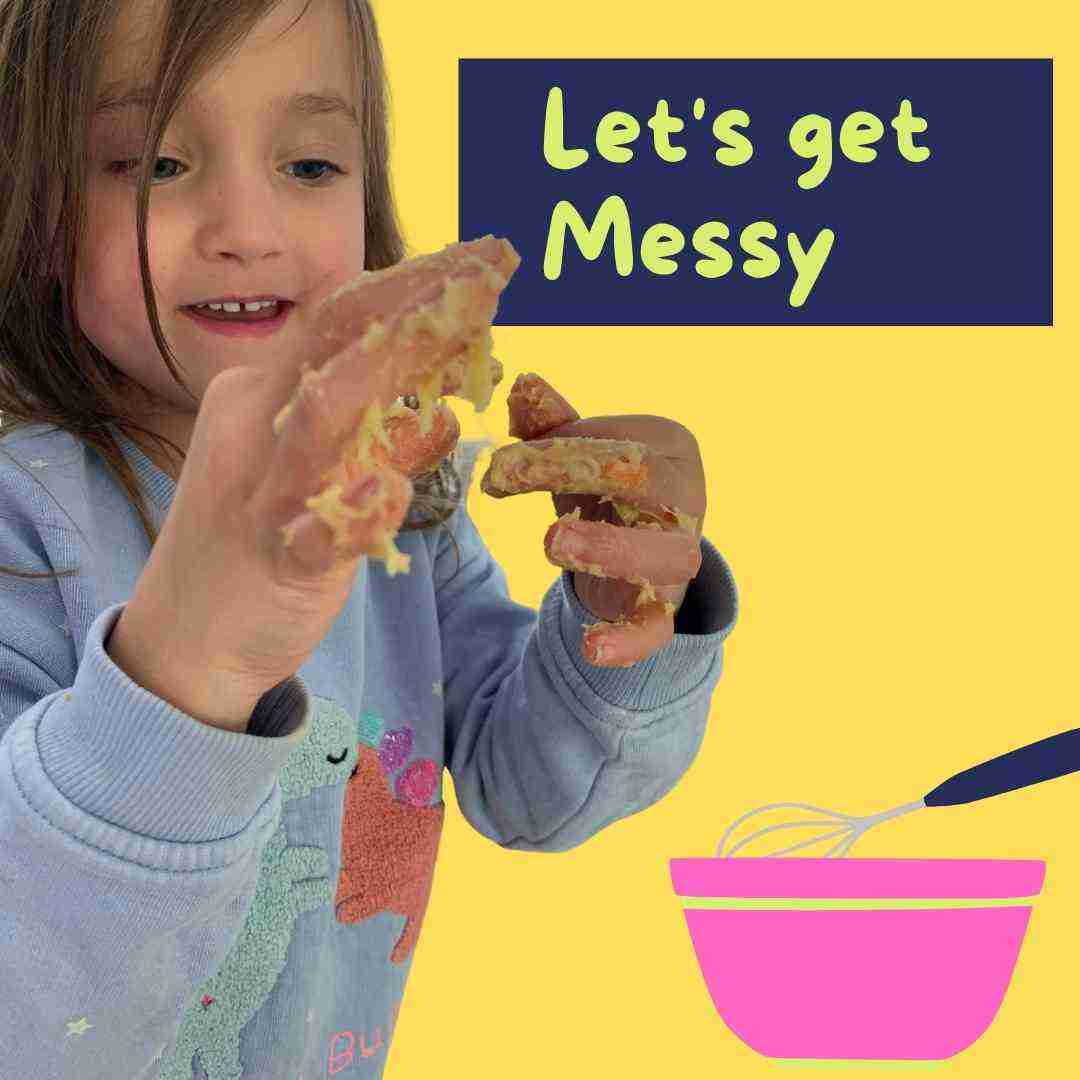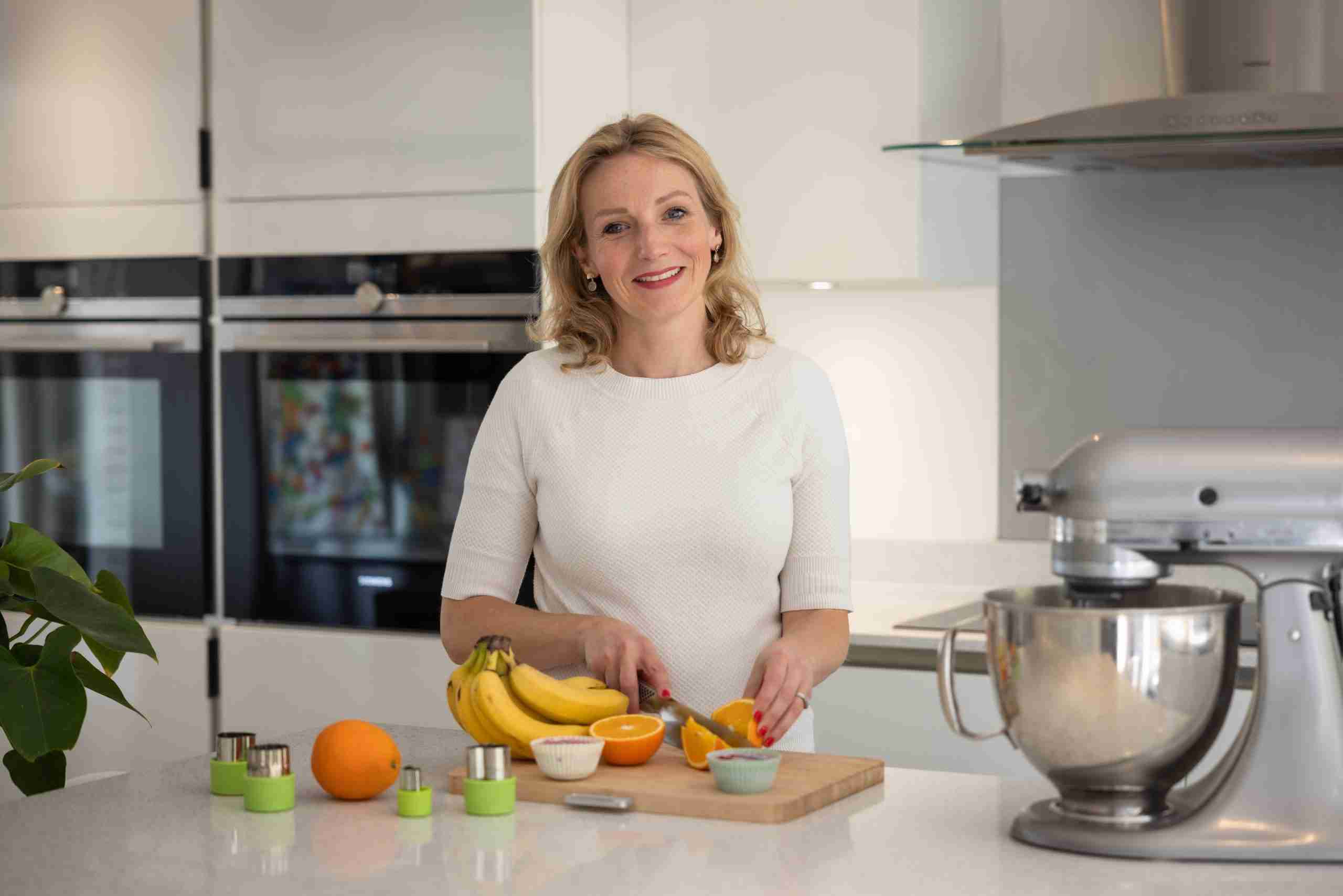So should your kids play with food? And I get it! I bet you feel like you spend your whole life picking up toys, food, and general mess. Plus you’d probably prefer it if your child actually got some nutritious goodness out of the food you spent ages preparing.
But there are actually plenty of benefits to playing with food, and there’s even evidence to suggest that children who are allowed to play with their food end up as less fussy eaters than those who are not allowed to play with their food.

Let me try and convince you why kids should play with food
Steps to eating
Some research suggests that there are 32 steps to eating, which starts with being in the same room as a food. It’s not until step 14 that a child would be expected to touch a food with their fingertip, and then only at step 27 would a child be expected to actually take a bite. What happens in between? A whole lot of play.
Exploring about foods
Kids learn through touch and play. Your child may need to touch their food before they’re prepared to try it. They need to squish and squeeze and mix in order to become familiar with different textures. Which kind of makes sense, right? If you were told to eat something that you weren’t familiar with, would you just pop it into your mouth? Or would you investigate it first by poking it, squishing it, or smelling it? When you think about it, it’s really pretty natural to want to play with our food.
You might even like to allow your child to play with food in a play environment rather than a meal time environment. This will introduce your child to a food in a non-pressured way, which could make them more likely to give things a go. Messy play is perfect for this – you could play with cars in dry pasta or rice, make mountains with flour, or set up a teddy bears’ picnic with real food.
It can help with fussy eating
By letting your child play with food, you are also increasing their exposure to a food. It can take up to 30 exposures or more for a child to like a new food. So don’t give up and, if your child seems to have a mental block about a particular food, pare things back to play where there’s no expectation that they eat it.
Motor skills
Playing with food – particularly finger foods – will also help to develop your child’s fine motor skills. This can also help with speech development and their oral motor progress.
It let’s you enjoy your food
Finally – and perhaps most importantly – playing with food allows you and your child to build positive associations with eating. Because let’s be honest, feeding your child every mouthful just so they don’t make a mess or because they refuse to eat is exhausting for you, and takes all the fun out of food for your child. Instead, if you allow your child to play with food, then you can both enjoy the social side of mealtimes. If you’re just starting out, try to give at least 10 minutes for your child to feed themselves before getting involved and helping them.
So overall, the answer is YES you absolutely should let your child play with their food, and try to embrace the mess as much as possible!
If you have enjoyed this, you can find more from me by downloading my new e-book or, for a one-to-one consultation, visit www.dietitianwithadifference.co.uk.

